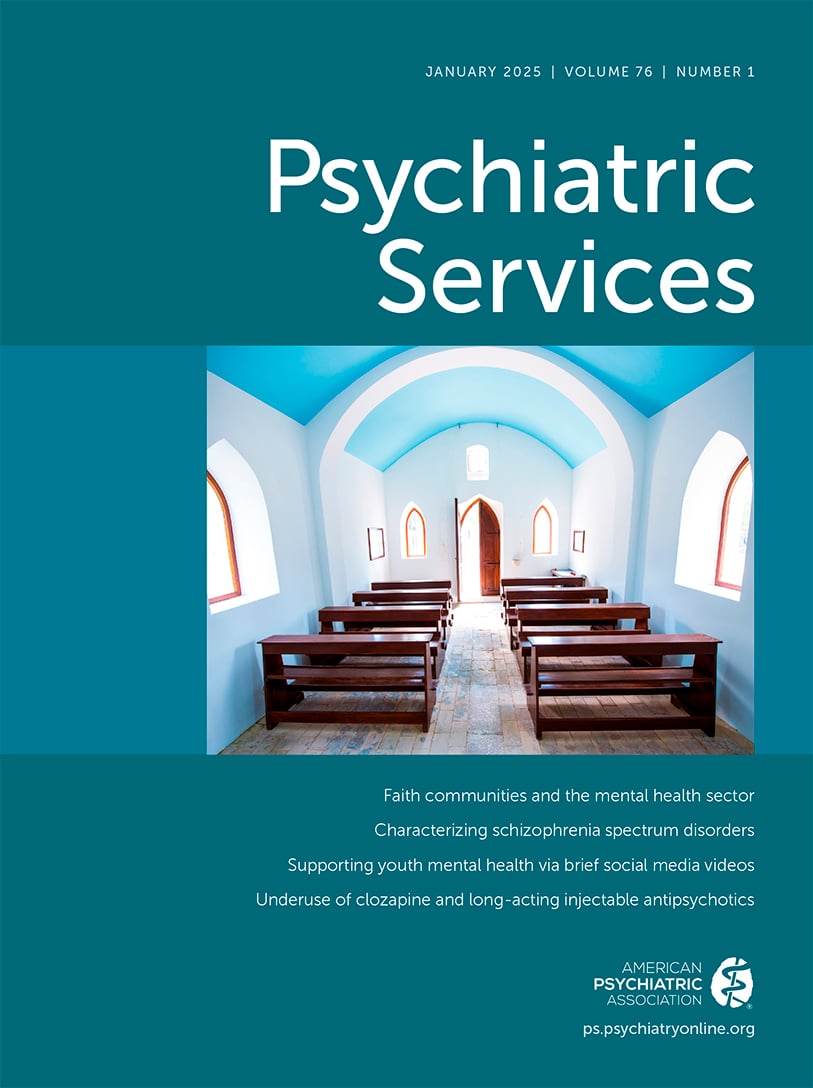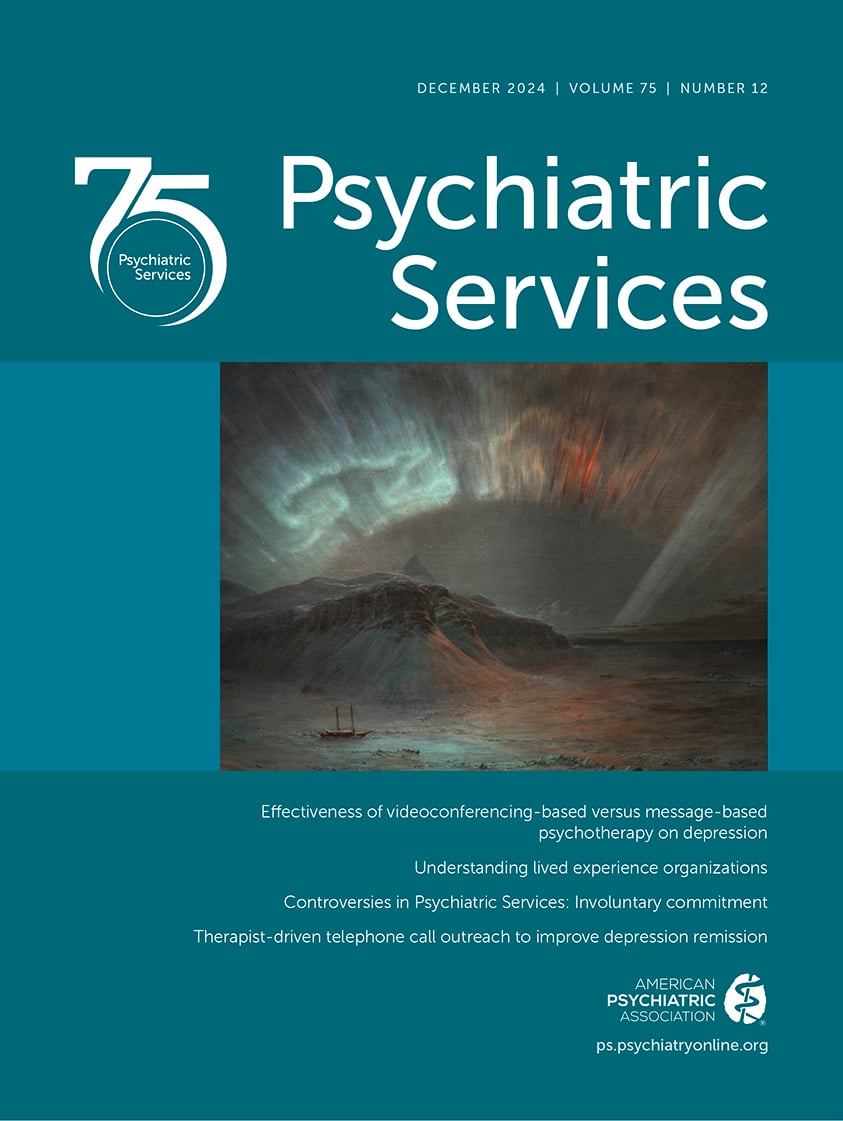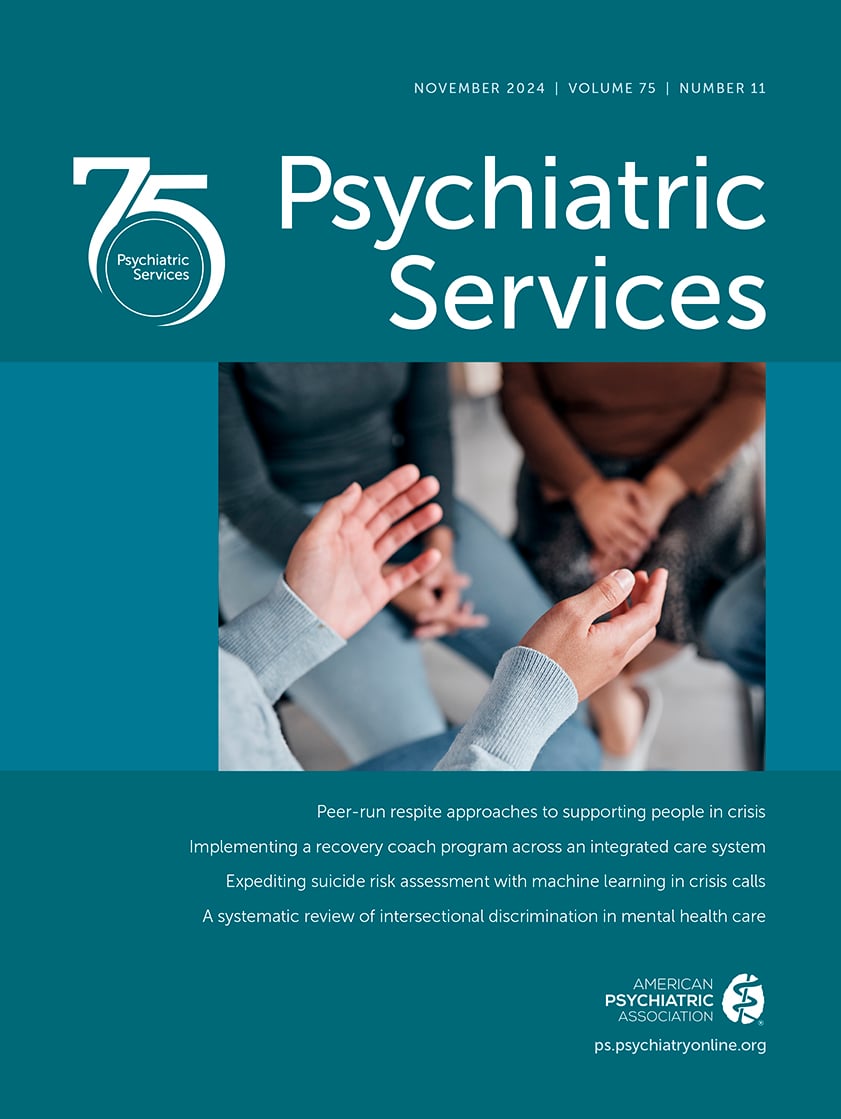Psychiatric Services
- Volume 36
- Number 7
- July 1985
Article
Publication date: 01 July 1985
Pages711–713Discussing treatment planning for a young child this month is Major Peter S. Jensen, M.D., who is assistant chief if the child, adolescent, and family psychiatry service at the Eisenhower Army Medical Center in Fort Gordon, Georgia.
https://doi.org/10.1176/ps.36.7.711Publication date: 01 July 1985
Pages727–732Although employee assistance programs are rapidly becoming the predominant vehicle for the delivery of mental health services in occupational settings, few programs employ a psychiatrist on either a part-time or a full-time basis. After providing an ...
https://doi.org/10.1176/ps.36.7.727Publication date: 01 July 1985
Pages732–737Homelessness among mental patients is frequently associated with deinstitutionalization. In a study to clarify the relationship between homelessness and psychiatric hospitalization, data from Illinois statistical reports and from admission reports of a ...
https://doi.org/10.1176/ps.36.7.732Publication date: 01 July 1985
Pages738–741The author cites increasing numbers of chronic, homeless, and neglected mentally ill people as evidence of the failure of deinstitutionalization and community care to live up to their promise to reduce chronicity, the need for long-term hospitalization, ...
https://doi.org/10.1176/ps.36.7.738Publication date: 01 July 1985
Pages742–745The author argues that most of the mentally ill should be treated in the community, where they can develop the skills necessary to function in society. The state hospitals should be used only to treat the most unmanageable patients. The author blames the ...
https://doi.org/10.1176/ps.36.7.742Publication date: 01 July 1985
Pages746–748The effect of a two-week wilderness camp on ten skillareas related to community survival of the chronic mentally ill was assessed both by participants, who were adult chronic psychiatric patients from two Oregon state mental hospitals, and by camp and ...
https://doi.org/10.1176/ps.36.7.746Publication date: 01 July 1985
Pages749–753The authors examined how the Medicaid hospital benefit structure affects the length of stay of psychiatric inpatients and transfers to state mental hospitals and nursing homes. They hypothesized that length-of-stay and discharge patterns would depend on ...
https://doi.org/10.1176/ps.36.7.749Publication date: 01 July 1985
Pages754–760For psychiatric patients treated in general hospitals, the prospective payment system does not differentiate between patients treated in medical-surgical wards and patients treated in psychiatric units. in particular, the system uses a single length-of-...
https://doi.org/10.1176/ps.36.7.754Publication date: 01 July 1985
Pages760–763Prospective payment represents a major economic challenge to inpatient psychiatric units. For a unit to survive, increased efficiency of treatment will be crucial but will probably not be enough. Most units will need to alter the percentages of high-cost ...
https://doi.org/10.1176/ps.36.7.760Publication date: 01 July 1985
Pages764–769By December 31, 1985, the Secretary of tbe Department of Health and Human Services must report to Congress on whether psychiatric programs now exempt from Medicare's prospective payment system can be brought under that system, and if so, how. The ...
https://doi.org/10.1176/ps.36.7.764Severity of Illness and Diagnostic Formulation: Classifying Patients for Prospective Payment Systems
Publication date: 01 July 1985
Pages770–772The authors review several methods for enhancing the clinical utility of psychiatric diagnostic formulations and their value in predicting resource consumption. They suggest incorporating the concept of severity of illness in a comprehensive diagnostic ...
https://doi.org/10.1176/ps.36.7.770Publication date: 01 July 1985
Pages775–776Taken as a whole, this plan offers a relatively simple pricing scheme that creates some incentives for economizing behavior. With respect to the setting of the rate and the determination of covered costs, we expect that the same rules will be followed for ...
https://doi.org/10.1176/ps.36.7.775Past Issues
View Issues Archive
Vol. 76 | No. 1

Vol. 75 | No. 12

Vol. 75 | No. 11
